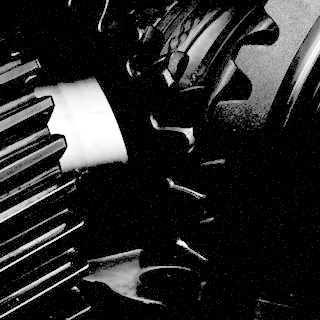
Future potentials and strategies of traditional industries in Germany: impacts on competitiveness and employment
- Project team:
Oliver Som, Steffen Kinkel, Eva Kirner, Daniela Buschak, Rainer Frietsch, Angela Jäger, Peter Neuhäusler, Michael Nusser, Sven Wydra
- Thematic area:
- Topic initiative:
Committee on Education, Research and Technology Assessment
- Analytical approach:
Innovationsreport
- Startdate:
2009
- Enddate:
2010
sprungmarken_marker_2231
Background and central aspects of the topic
Regarding industrial sectors, high-technology and low-technology branches are frequently distinguished. This differentiation is based exclusively on their different degrees of research and development (R&D) intensity. Assuming that high R&D intensity is accompanied by high innovative capability, R&D-intensive sectors are attributed a greater innovation capability and competitiveness compared to less R&D-intensive, traditional industries. This assumption seems problematical for several reasons.
- On the one hand, from a macro-economic viewpoint, traditional, less research-intensive industries are still responsible for a very relevant share of the total value added, as well as jobs in developed industrialized nations (e.g. in Germany in 2005, approximately 48 % of the jobs in manufacturing industry).
- On the other hand, expenditures on research and development in this context are assigned an outstanding significance for economic success, without taking into account other innovation pathways or competitive strategies, such as for instance service innovations or certain technical, respectively organizational process innovations.
- Moreover, it seems more meaningful to conduct the discussion about the significance of R&D intensity for competitiveness also at the company level, as in considering only sectors important intra-sectoral differences might be lost regarding firms with different R&D intensities. Thus, for instance, in the sectors food and beverages, paper, textiles, metal or rubber and synthetic goods between 20 % and approx. 45 % of companies can be identified which could actually be classified as high-technology firms, in view of their R&D intensity (R&D expenditures in proportion to turnover).
An investigation of future potentials and innovation strategies therefore appears justified within the framework of an innovation report.
Objectives and approach
From the above, the question arises whether traditional industries will be able to maintain their present importance in the long run. It should therefore be clarified which competitive and innovation strategies non-R&D-intensive firms pursue and which future potentials can be connected herewith. It will further be examined how the competitive strategies of non-R&D-intensive enterprises might affect employment. Finally, it will be analyzed whether the highest share of low-skilled personnel are in fact employed in traditional industries at present, and which effects are foreseeable on the qualification requirements of these workers in the future.
The following working steps are planned for the project:
- Processing existing – till now mainly qualitative – research results on the competitive and innovation strategies of non-R&D-intensive enterprises;
- Evaluation of the Fraunhofer ISI database ("German Manufacturing Survey" 2006) with regard to competition strategies and innovation patterns of non-R&D-intensive firms;
- Assessment of statistical data sources to ascertain the relevance of traditional industries for the overall economic value added;
- Quantitative estimation of the spill-over effects/ impacts of traditional industries on the innovation and industrial location Germany: based on input-output calculations and micro-census data, employment and R&D spill-over effects should be calculated in order to answer the following questions: Which indirect employment effects are stimulated by traditional industries buying (capital) goods and services from (domestic) suppliers in upstream industries (e.g. in high-technology sectors)? Which R&D activities are prompted by traditional industries through buying R&D and knowledge-intensive input goods in upstream supplier sectors? And which qualification-specific employment effects will be induced by the traditional industries in other sectors (among others, also knowledge-intensive services)?
- Carrying out a telephone survey of ca. 250 non-R&D-intensive companies to identify their present innovation and competitive strategies and to ascertain the future challenges in this area;
- Investigation of the present-day qualification structures of workers employed in traditional industries;
- Estimation of future requirements for employee qualification structures based on the telephone interview results.
Publications
Som, O.; Kinkel, S.; Kirner, E.; Buschak, D.; Frietsch, R.; Jäger, A.; Neuhäusler, P.; Nusser, M.; Wydra, S.
2010. Büro für Technikfolgen-Abschätzung beim Deutschen Bundestag (TAB). doi:10.5445/IR/1000137684
Som, O.; Kinkel, S.; Kirner, E.; Buschak, D.; Frietsch, R.; Jäger, A.; Neuhäusler, P.; Nusser, M.; Wydra, S.
2010. Büro für Technikfolgen-Abschätzung beim Deutschen Bundestag (TAB). doi:10.5445/IR/1000133260
In the Bundestag
- Vorgang - Bericht, Gutachten, Programm im Dokumentations- und Informationssystem für Parlamentsmaterialien (DIP)
